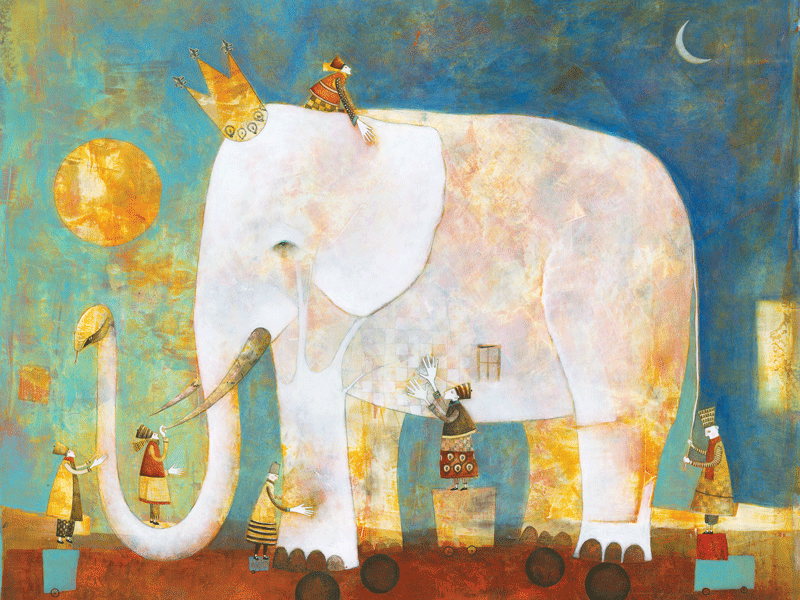There was once a king who received a gift, an elephant, from a friend in a faraway land. The king’s people had never encountered such a beast. He instructed six wise men, all blind, to inspect the elephant and describe it to him.
The first of the wise men touched the elephant’s trunk, describing it as a tree branch. The second felt a leg, suggesting it to be a pillar. The third touched the elephant’s ears, saying it was a fan and the fourth described a sword as he stroked the
elephant’s tusk. The fifth and sixth men approached the elephant’s stomach and tail, declaring the elephant to be a pot and a rope, respectively. Each of the six wise men observed the elephant based on their own perception but did not make out the elephant in its totality.
The king, aware of the elephant’s complete form, sought to explain that all people—even the wise—can be mistaken if they fail to observe the bigger picture.
Buddhist scriptures liken the elephant to the Buddha nature; the king to the Buddha; and the blind men to ordinary people who are ignorant of the enlightened nature inherent in all life. Nichiren Dai-shonin teaches that, through chanting Nam-myoho-renge-kyo, even ordinary people can awaken the Buddha nature within and observe the reality of life through the enlightened perspective of the Buddha.
—Prepared by the World Tribune staff
You are reading {{ meterCount }} of {{ meterMax }} free premium articles

